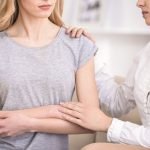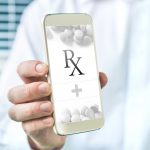Notes from the Field: March, 2021
JARED L. ZEFF, ND, VNMI, LAC
The following is not an article prepared for a medical journal. Not every statement of fact is cited or referenced. This is a commentary on the medicine, a running set of observations about practice in the field. It’s not meant to be a peer-reviewed presentation; rather, these are notes and thoughts from a practicing naturopathic physician, a primary care doc in general practice.
Getting New Information
I recently attended the AANP’s naturopathic medical conference at the Arizona Biltmore in Phoenix. One of our associations likes to meet there every 2-3 years, and I like to attend these conferences because I really like the Biltmore. Originally designed by Albert Chase McArthur and Frank Lloyd Wright in 1928, the resort is an architecturally stunning collection of buildings in the desert, with the main building a real feast for the eyes and intellect. Wright remains one of the premier architects of the 20th century and was a master of design, fitting buildings into their natural surroundings. Some of his design concepts remain in common use. He pioneered the use of molded concrete tiles and blocks for building, and the Biltmore is an example of this style. The resort has several swimming pools, including a new adults-only pool, but there is also a large pool with massive spiral water slides that children, and naturopaths, love to play in. Our major receptions occurred around that pool.
I had a room fortuitously adjacent to my favorite pool, the original pool of the Biltmore, hidden between a couple of the room complexes. This is a perfect pool for lap swimming, my primary exercise. I used to find my way over to that pool for my early morning swim, and usually found Jacob and Rena Bloom already there. I would swim, and then spend some time talking with Jacob, perhaps the most curmudgeonly member of our little profession. He is also among the best writers in our profession, and I have long urged him to put his essays into books. Jacob retired recently, and I did not see him at the conference. I missed the pleasure of seeing him there.
If you have not read any of Jacob’s essays, and if you like a good read, I recommend that you find him. His articles have appeared in publications such as NDNR, Natural Medicine Journal, and Townsend Letter, but you can also access his delightful writings at his personal blog: https://drjacobschor.wordpress.com/author/drjacobschor/.
I began practicing in 1979, before the availability of personal computers or the invention of the internet. There were no “Zoom” conferences back then. We obtained our required continuing education hours by physically gathering together and teaching each other. After a year and a half of lockdowns and Zoom meetings, I was craving a real conference where I could spend time with colleagues after hours and talk about things face-to-face. This is probably my age speaking, reflecting a preference for the way things used to be in the good old days. But that’s really how I feel. Conferences are not simply a set of lectures to attend, a set of linear information dispensed with some dinners in between. One of the great draws, for me at least, is the privilege of being able to sit with colleagues I normally do not see, and to talk about things, especially about the medicine.
Managing Hypertension
One such conversation at the conference occurred between Dr Rick Liva and me. We chanced to sit together at one of the lunches, and we talked. He brought to my attention a Cochrane Library study regarding blood pressure that he had recently discovered among the volumes of the University of British Columbia’s Therapeutics Letter, a bimonthly newsletter to which he subscribes. He said he would send them to me, and he did. I refer here to their May-June 2017 issue.1
In this newsletter, I read about the meta-analyses conducted by the Cochrane Library on blood pressure. They examined primarily the mortality statistics associated with multiple blood pressure studies.
I read in detail what Dr Liva had told me about, which is that for adults with blood pressures below 160/100 mm Hg, anti-hypertensive drugs have not been demonstrated to reduce mortality or morbidity. You do not need to treat these cases. In addition, the best first treatments for blood pressures above this level are thiazide diuretics. According to Cochrane, alpha- and beta-blockers are inferior to other classes of drugs for reducing total cardiovascular events, and calcium channel-blockers increase hospitalizations and death due to inducing congestive heart failure.1 For me, this information was revelatory, though I expect most who are reading this article already knew about this. Thank you, Dr Liva.
Not a Disease
I had found in my own work that the best initial treatment for hypertension, in addition to the correct diet for the patient, an initial set of constitutional hydrotherapy treatments, and some appropriate homeopathic interventions, is the use of Petroselinum (common name, parsley), usually in combination with 1 or 2 additional botanicals, such as Phytolacca, Tilia, Crataegus, or others. Petroselinum is my favorite diuretic for most uses. My simple formula is 5-6 parts Petroselinum and maybe 1 part Phytolacca or Tilia. I give 30 or 40 drops in a little water, 2-3 times daily. I will use the Phytolacca if there is ankle edema, and generally use Tilia if not. Petroselinum is essentially without side effects and can be taken as an infusion if the patient is away from home. I occasionally get a call from a patient on vacation who forgot to bring along their blood pressure medicine and is wondering what they should do. I tell them to go to a grocery store and get some fresh parsley and make tea out of it. That will hold them until they get back home. It is also useful for most types of edema.
Hypertension is one of the examples I use to illustrate the Hahnemannian dictum to know “what is curable” in medicine. On the first page of the Organon, Hahnemann gives several instructions to the physician who wants to truly heal his patients. Being a good Vitalist, Hahnemann would not simply target high blood pressure as if it were a disease. It is not the thing “to be cured,” it is being caused by something else. It is that other thing that may require treatment, and the first “other thing” in my experience is toxemia – the generation of toxicity through the mechanisms of poor digestion. This is simply good old naturopathy.
What is hypertension? It is mostly an attempt by the body to get more blood into the brain against an increasing set of resistance factors, such as arterial stiffening. There are other possible causes, such as kidney disease or heart disease, though most hypertension is labeled “essential,” which could also be called “idiopathic,” meaning “We do not know why.” As a naturopathic doc who depends upon the wisdom of the body, I first try to consider why a wise and intelligent system would raise its blood pressure when that could be harmful to the organism. One of the things I learned from these UBC articles that Dr Liva sent me is that the level of pressure that is harmful is higher than I thought.
As a naturopathic doctor, I seek to normalize function. My first therapies are to look for and remove or reduce what Hahnemann called “obstacles to the cure,” or “…the things that derange health.”
As with any abnormal condition or illness, I seek to restore normal healthy function, not simply to suppress symptoms. I seek first to understand the cause, as Hahnemann directed us. This requires a good history, looking for elements of stress or perhaps toxic exposures, and any medical interventions that could raise blood pressure. Toxemia is a common culprit.
The kidney has at least 3 mechanisms to control blood pressure, and this is because blood pressure is the engine that drives the kidney. It is the blood pressure that pushes the fluids through the filtering membranes of the glomeruli, thereby powering the filter. I posit that the kidney has mechanisms to sense the toxicity levels and thereby adjusts the blood pressure to reduce toxicity from the blood, as required. Prior to the late-19th century, it was presumed that most hypertension was caused by kidney disease.2 However, as cases without any kidney involvement were increasingly observed, this thinking changed. Currently, as many as 90% of cases of hypertension are considered “essential,” ie, having no known secondary cause.3 But the body does not do things without cause. I have found that as toxemia is reduced, blood pressure usually reduces as well. So this is where I start.
In conventional medicine, we learn that hypertension is a disease. It has its own ICD code. It has its guidelines for treatment. Recently, allopathic doctors have taken to treating blood pressures at or below 120/80 mm Hg with medical interventions. This is justified as preventive medicine. It is argued that if we can keep blood pressures below this level, then we can obviate more myocardial infarctions and strokes. To me, this makes no sense. I say this because the medical interventions are not without cost. The Cochrane articles point out that such interventions create symptoms, most commonly fatigue or lightheadedness, but others more severe.
I once had a patient in the hospital. She had a constant, severe migraine and a blood pressure of 300/150 mm Hg. I did not know that this was possible without blowing out an artery somewhere. She had not slept for 3 days. She was also not responding to any treatment in the hospital. They reluctantly let me in, assuming that I was her drug dealer, which is another story, but they would not let me participate in treatment. They even assigned a guard to accompany me. Being able to do almost nothing to help this poor woman, I asked if I could touch her feet. I gave her some strong acupressure to Liver 3, between the first and second metatarsals, which was rather painful, but she fell asleep right then and her blood pressure began to fall. That is a primary point to relieve “stress.”
High blood pressure is not a disease, in my opinion; it is a result of a disturbance. Reduce the disturbance, and the excessive pressure will fall. I now know that I need not worry about a pressure in an adult that is less than 160/100 mm Hg. But employing a generalist naturopathic approach to health improvement is usually the place to start, anyway, and in doing so, most abnormal pressures should begin to reduce.
Bloodless Surgery
One of the conference highlights for me was a talk by Dr Matthew Robinson, who was a protégé of Jim Sensenig, having studied with Jim for 4 years. Jim taught him the method of manually reducing a hiatal hernia, along with other techniques. Dr Robinson had an old copy of Dr Wendel’s book, Bloodless Surgery.4 He told us how he had to read it several times to understand what Wendel was saying. He spent a number of years studying Wendel’s writing and applying his techniques, and eventually reduced his treatment from a comprehensive set of about 30 movements to a more efficient set of 10 movements, which he demonstrated and then coached us through.
My first clinic was in McMinnville, Oregon, in 1979, where years before, there had been a hospital set up to do bloodless surgery, run by a naturopathic doctor, Dr White. My clinic was called the White Oak Naturopathic Clinic. In the early 1980s, my partner and I occasionally got a call from old patients of Dr White, wondering if the clinic was still that of Dr White and whether we still did the old bloodless surgery. I was familiar with the concept of bloodless surgery. I had learned the hiatal hernia reduction in school, along with Jim. I used it often in practice, but had long wondered about other techniques that might prove equally valuable. But I did not know where to get that information, and filed that, along with many other things, in the “lost medicine” category. I thank Dr Robinson for his dedication to bringing this valuable information back to us. If you are interested, I would recommend that you check out the recording of Dr Robinson’s presentation.
We learn from studies and we learn from books, but I think medicine is mostly learned from colleagues. This is how we are learning to treat Covid-19. Originally medicine is learned by apprenticeship, and then we go on to discover things, and write about them, and teach the ones that work to each other.
Respectfully,
Jared L. Zeff, ND, VNMI, LAc
References
- Therapeutics Initiative. Using Best Evidence for the Management of Hypertension. Therapeutics Letter. May-June 2017. Available at: https://www.ti.ubc.ca/wordpress/wp-content/uploads/2017/09/106.pdf. Accessed July 22, 2021.
- Cameron JS, Hicks J. Frederick Akbar Mahomed and his role in the description of hypertension at Guy’s Hospital. Kidney Int. 1996;49(5):1488-1506.
- Alexander MR. Hypertension. Practice Essentials. February 22, 2019. Medscape Web site. https://emedicine.medscape.com/article/241381-overview#a1. Accessed July 29, 2021.
- Wendel P. Bloodless Surgery. United Kingdom: Society of Metaphysicians Ltd; 1992.

Jared L. Zeff, ND, VNMI, LAc is a licensed doctor of naturopathic medicine and a licensed acupuncturist. In addition to functioning as Medical Director at the Salmon Creek Naturopathic Clinic in Vancouver, WA, Dr Zeff taught on the faculty at National University of Natural Medicine in Portland, OR, where he was also Dean from 1988 to 1993, and holds a professorship in Naturopathic Medicine. Dr Zeff is a graduate of the University of California, NCNM, and the Emperor’s College of Traditional Oriental Medicine. He, along with Pamela Snider, is the author of the AANP’s Definition of Naturopathic Medicine, and the Therapeutic Order concept.










